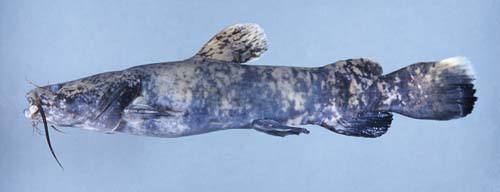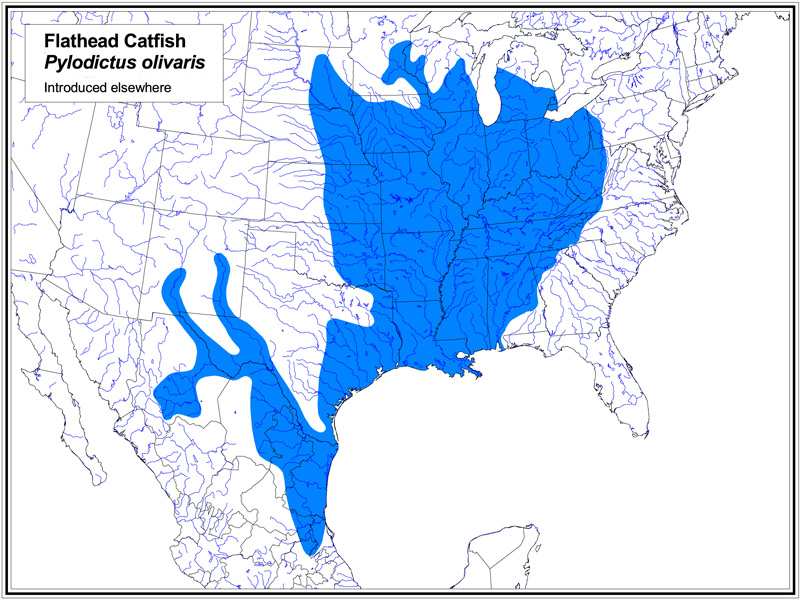
Adult from Wabash R., Wabash Co., IL
114 mm SL, Collected 2-October 1999, INHS 53369
FLATHEAD CATFISH
Pylodictis olivaris (Rafinesque 1818)
Identification: In all individuals except large adults, the caudal fin of the Flathead Catfish has a white tip on the upper lobe. The head is wide and flat, and all individuals except juveniles have the lower jaw projecting beyond the upper jaw. The body is slender and slightly compressed with small eyes on top of the head. The adipose fin is short and high with the rear end free from the back. The body is yellow to dark purple-brown with black or brown mottling above and white to yellow below. The chin barbels are white to yellow, and the fins are mottled. The anal fin is short and rounded with 14-17 rays. The caudal fin is rounded or slightly notched. The premaxillary tooth patch has a backward projection on each side. To 61 in. (155 cm) total length.
Range: Found in the lower Great Lakes and Mississippi River basins from western Pennsylvania to the White-Little Missouri River system in North Dakota and south to Louisiana. Also found on the Gulf Slope from the Mobile Bay drainage in Georgia and Alabama, to Mexico. The Flathead Catfish has been introduced elsewhere in the United States and is generally common.
Habitat: Flatheads are found among logs and around debris in pools associated with low- to moderate-gradient rivers, lakes, and impoundments. Young are found in rocky and sandy runs and riffles.
Similar species: Other large catfishes, including the Channel Catfish, Ictalurus punctatus, and Blue Catfish, I. furcatus, lack the mottled color pattern of the Flathead, the white tip on the upper lobe of the caudal fin, and the projecting lower jaw.
